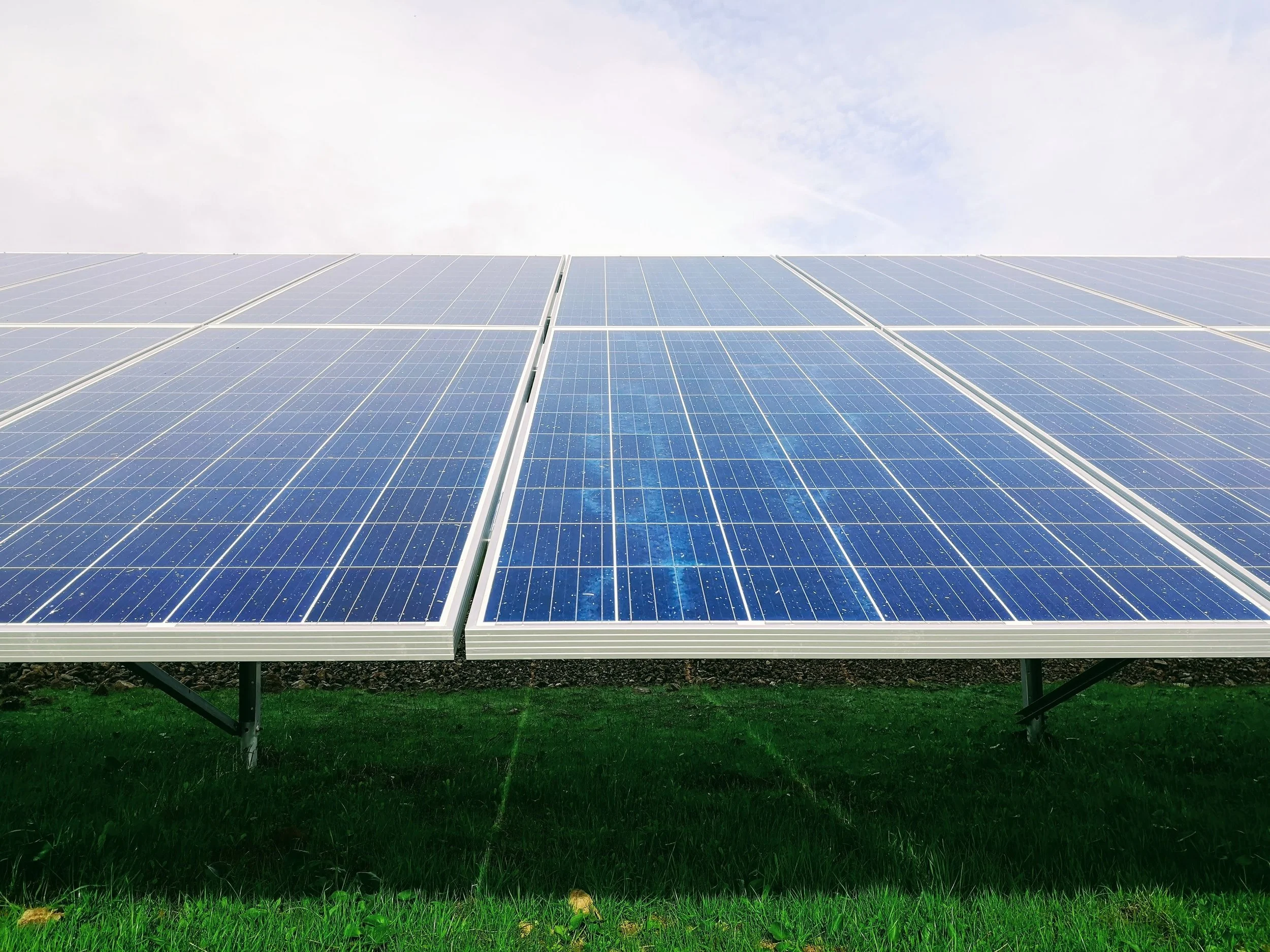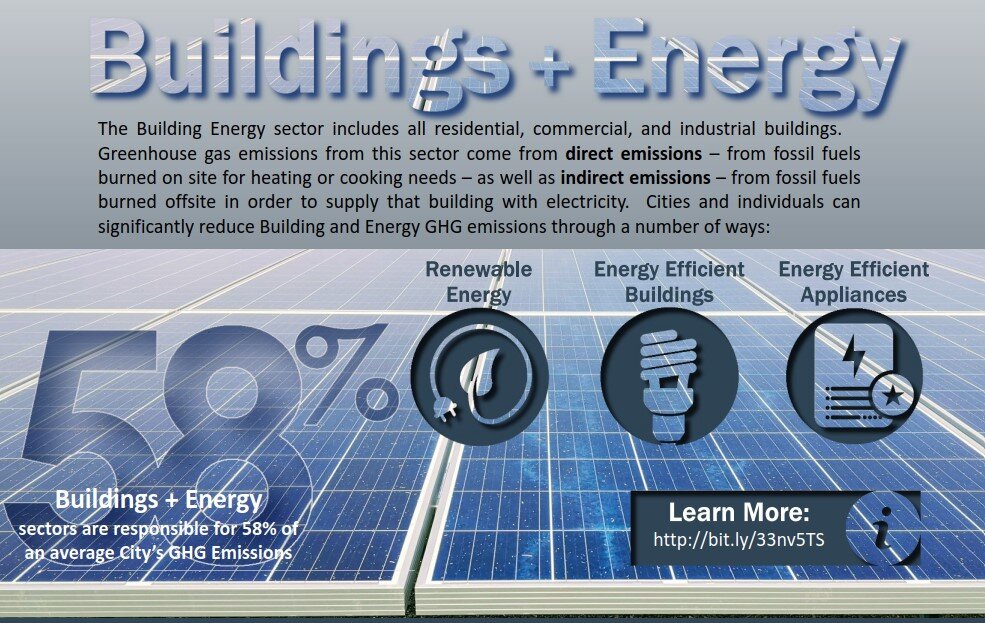“Twenty-five years ago people could be excused for not knowing much, or doing much, about climate change. Today we have no excuse”
The Building Energy sector includes all residential, commercial, and industrial buildings. Greenhouse gas (GHG) emissions from this sector come from direct emissions – from fossil fuels burned on site for heating or cooking needs – as well as indirect emissions – from fossil fuels burned offsite in order to supply that building with electricity. Building Energy and electricity production in the United States is responsible for approximately 58% of our total greenhouse gas emissions which contribute to climate change.
Climate Action Plan strategies that cities can implement fall into four primary categories:
Example - leading by example by implementing strategies on municipally owned facilities and operations.
Advocate - advocacy actions working for change in State and Federal policies as well as advocating for change within their own community through education and awareness campaigns.
Incentivize - these are actions the city can take to incentivize action in the private sector - these can include direct economic incentives as well as actions which remove barriers or make climate action efforts easier for businesses and individuals.
Require - actions which implement policies or ordinances which require the private sector to comply. Examples include requiring energy efficiency and renewable energy within PUD ordinance or the adoption of an energy benchmarking ordinance.
Cities and individuals can significantly reduce Building and Energy GHG emissions through a number of ways:
Renewable Energy
Renewable energy sources like hydro, wind, and solar power produce little to no global warming emissions - even when including “life cycle” emissions (ie, the emissions from each stage of a technology’s life—manufacturing, installation, operation, decommissioning). For every KWh of energy we can switch to come from renewable energy we eliminate up to 2 pounds of greenhouse gas – this is equal to eliminating 18 cubic feet of man-made greenhouse atmosphere!
Energy Efficient Buildings
Homes and commercial buildings use large amounts of energy for heating, cooling, lighting, and other functions. "Green building" techniques and retrofits like increased insulation, passive heating cooling and lighting design, energy efficient heating and cooling systems, and energy efficient lighting can reduce a building’s energy consumption by 12% to up to 100% of a typical building.
Energy Efficient Appliances
The energy used by our computers, appliances, and equipment – also known as Plug Loads – total 33%-40% of the energy consumed in our buildings. By selecting energy efficient appliances and implementing energy management strategies, a typical building can reduce its building energy use up to 20%.
Find specific strategies with paleBLUEdot’s ACTION Finder Climate Action Database.


